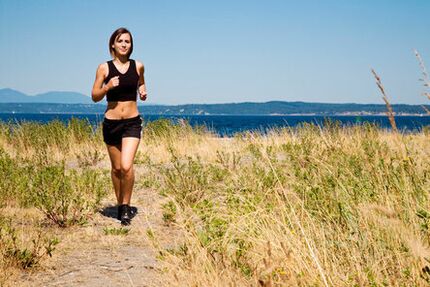Osteochondrosis of the cervical spine is one of the most common problems on our planet, which sooner or later affects absolutely everyone. Taking into account the trends of the modern way of life, the first signs of pathology can appear at a fairly early age (20-25 years), and for no apparent reason. They are often the only symptoms of headaches and increased fatigue, which in the frantic rhythm of life often simply "knock" into such "little things", clenching their teeth and not thinking about the reasons. In his article, the orthopedic traumatologist talked about the causes of pain, and also talked about how to get rid of them.
But cervical osteochondrosis can manifest not only as a periodic headache, but can cause much more serious health problems: diseases of the cardiovascular and respiratory systems, problems with hearing, vision, coordination, development of ischemia (lack of oxygen) of the head and spinal cord, nerve damagespinal cord roots - radiculopathy, partial or complete loss of mobility.
The essence of the process is very simple - over time, a large load on the spine and malnutrition of intervertebral structures leads to thinning and destruction of the intervertebral discs and restructuring of the vertebrae themselves, which will inevitably lead to disruption of their function.
But all these terrible scenarios can be prevented and prevented. First of all, this condition should not be considered a disease, but treated as a process of "wear" of the spine. After all, everything has its expiration date, whether it’s a car, a phone, or a favorite purse. Consequently, spinal care is needed at least as much as for a favorite thing. At the same time, don't forget that you can buy a new item, but you can't buy a new "damaged" spine or you can't replace it under warranty. And the most important thing is that the cartilage tissue does not regenerate, so the sooner you get to know osteochondrosis, the longer you will have to "be friends". And even with proper treatment, from time to time, he will remind himself.
Reason for developing osteochondrosis
There are many reasons that can be easily grouped - the wrong way of life. Let us highlight the main risk factors for the development of such a condition:
- sedentary lifestyle;
- prolonged stay in one position (development of muscle hypertonia);
- overweight;
- unhealthy diet (lack of water and basic trace elements in the body);
- great physical activity and weight lifting;
- incorrect posture;
- spinal injuries;
- hereditary predisposition.
After analyzing the reasons, it is easy enough (at least on paper) to remove the vast majority of risk factors from your life - which is actually the main method of treatment. Finally, drug therapy is the fight against the consequences of disease.
Some kind of special drug prevention as such has not yet been invented, although the pharmaceutical market has traditionally been rich in supply. Of course, all types of chondroprotectors have a clinical effect, but it is achieved after long and constant use of the drug and is not very persistent. In fact, these drugs contain substances that make up the intervertebral discs, and by taking them we achieve only a “possible” improvement in the nutrition of these structures. All anti-inflammatory drugs eliminate only the pain syndrome, make the patient's life easier, without affecting the cause of these pains. Physiotherapy is quite common, such as shock wave therapy, electrophoresis and magnetotherapy. In extremely advanced cases, the question of surgical treatment may even be asked.
It should be noted that all these methods of treatment are possible only after consulting a doctor!
In this case, self-medication is strictly contraindicated - at best, you will simply waste time, at worst you can only harm yourself.
How to deal with this problem?
The first step is to change the word "fight" to the word "prevention". And it consists of ensuring normal function and nutrition of the spine. It is worth noting that we work with the structures of the musculoskeletal system and nutrition. Moreover, this work should last continuously and for life - it is the main guarantee of success.
Moreover, this work should last continuously and for life - it is the main guarantee of success.
The "I'll do exercises every six months" option doesn't work! It may be possible to delay the problem permanently (at best), at worst the effect will be zero and you will seem to be actively fighting the problem.
1. Physical activity / sport
This is the first step in preventing spinal wear. If you don’t want the mechanism to rust and fall apart, you need to let it work. But work should also be moderate, we are talking about healthy loads (working with body weight, functional training, stretching, cardio), and not about hanging 100 kg of iron on yourself and running with them on uneven terrain.
2. Providing a normal amount of oxygen
It is almost impossible to do this in the city, but you should still try to walk as much and as often as possible, visit park-forest zones and occasionally ventilate the room at work (it is important to avoid hypothermia yourself).
3. You can't stay too long
Regardless of the area of employment, take a short break every 40-50 minutes. When sitting for a long time, take a walk during a break or do some simple exercises on the spot to relieve muscle tension and back strain.
If your profession requires you to stand constantly, you need to sit down from time to time. It is important that while resting, your back is straight, as symmetrical as possible, and your feet are on the floor.
4. Ergonomics
It is necessary to provide yourself with the best possible work environment. We are talking not only about the work chair, but also about the correct placement of the work monitor, appropriate clothing and footwear, the amount of jewelry on the neck, etc. A kilo of jewelry for a long time will not have a positive effect on your health.
When working with a computer, the head should be straight, the arms should not be placed above the level of the elbows, the angle of inclination of the back when landing is 100-115 degrees - this position is considered the most important physiologically and allows you to prevent excessive muscle strain.
5. Complex exercise therapy
Physiotherapy exercises will help strengthen the corset for the back muscles and ligament apparatus. We are talking specifically about exercise therapy, daily (maybe several times a day) soft exercises, in which the muscles are not overloaded. An expert will help you choose a set of preventative exercises for exercise therapy, depending on the stage of the disease.
Example of the simplest neck muscle strengthening complex:
- Lying on your stomach, put your hands on the floor. Slowly raise your head, hold this position for a minute. Return to starting position. Repeat the exercise 3-4 times.
- Lying on your stomach, stretch your arms along your body. Turn your head slowly to the right. Return to the original position. Then turn your head to the left. Repeat the exercise in both directions 5 times.
- Sit in a chair. Slowly, as you exhale, tilt your head forward, bringing it as close to your chin as possible. Return to starting position. As you inhale, slowly tilt your head back. Repeat the exercise 10 times.
- If your condition allows, rotate your head 4 times clockwise and 4 times counterclockwise.
6. Power Features
Improper diet can encourage the development of the disease, so you need to monitor your diet. It is necessary to refuse or minimize the use of salt, sugar, sweets and sweets, fatty foods. Improper diet contributes to weight gain and increased stress on the spine. The following foods must be present in the diet:

- Vegetables and fruits (vitamin sources);
- Cereals (energy sources);
- Meat and fish (sources of protein and minerals);
- Dairy products (sources of calcium and other essential trace elements);
- Foods rich in fiber (necessary for proper bowel function and metabolism);
- Products that contain chondoprotectors (improve the properties of cartilage tissue).
Monitor fluid intake. You should drink 1, 5-2 liters of fluid a day. Lack of water in the body adversely affects the metabolism and condition of all body structures.
7. Sleep properly
The sleeping position must meet the following criteria:
The choice of mattress and pillow is equally important. You should rely on three characters when choosing bedding:
8. Massage
Last on the list, but one of the first in importance. An experienced massage therapist will not only ensure normal blood flow and oxygen supply to all structures of the spine, but will also help correct deformities and dysfunctions of the spine.
Prevention of osteochondrosis is lifelong, you must try to keep your back healthy for as long as possible, but as a result you will be able to maintain not only a healthy back, but also a healthy body, because in fact the main recommendation is to lead a healthy lifestyle. and go through "IT" in time!































